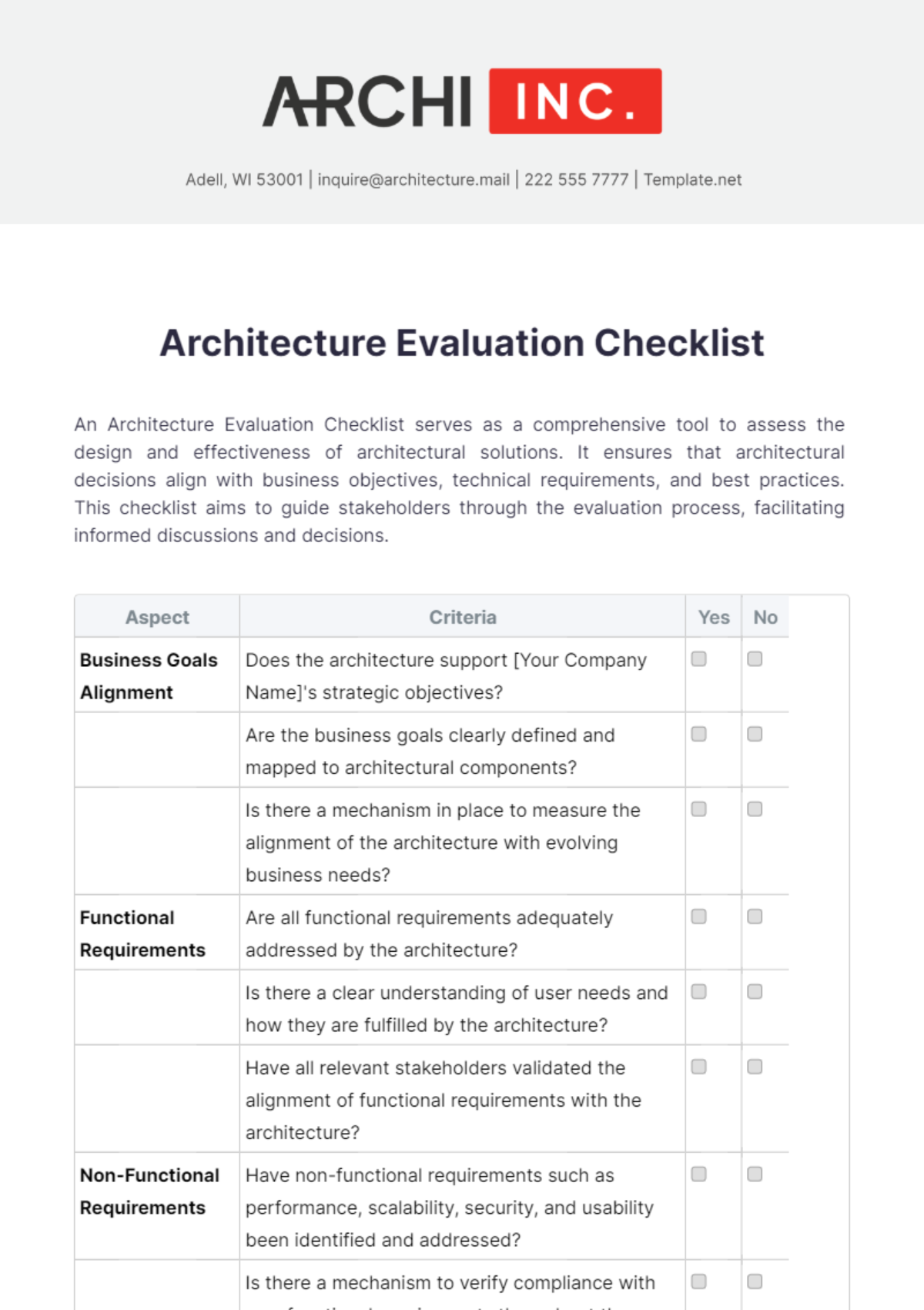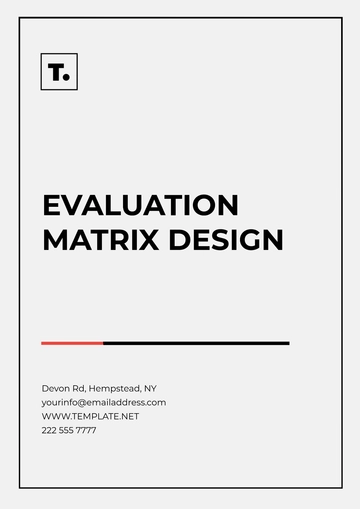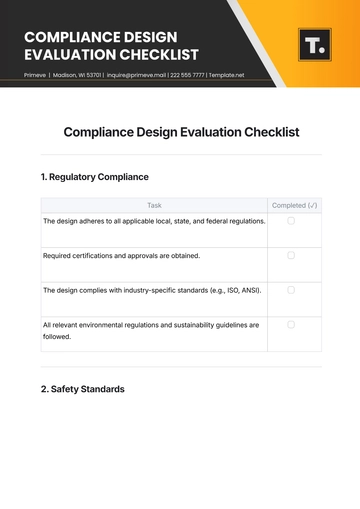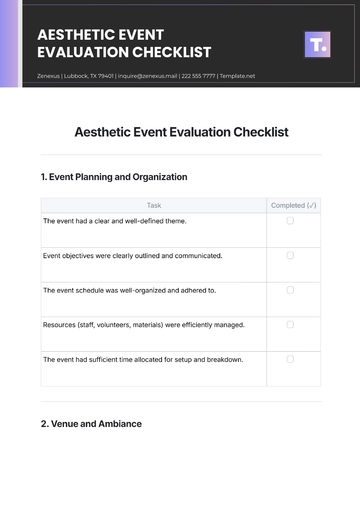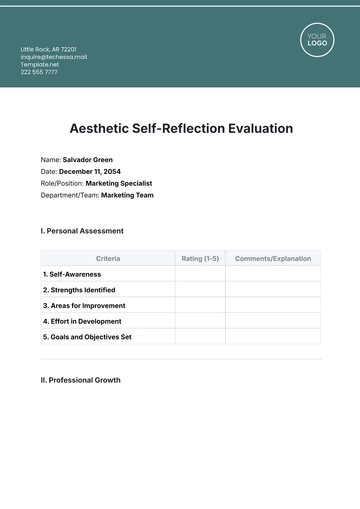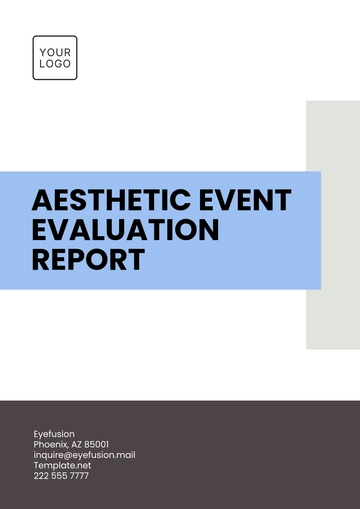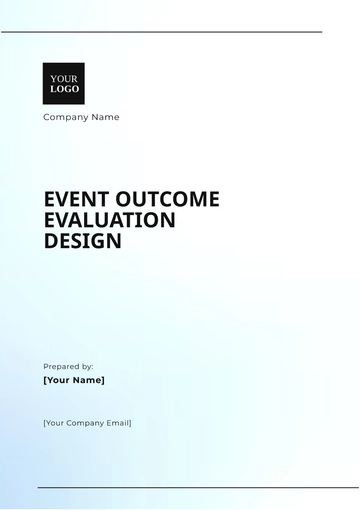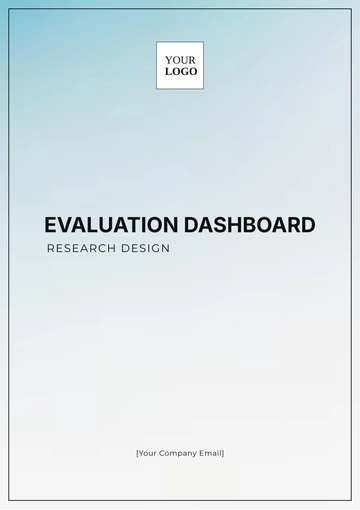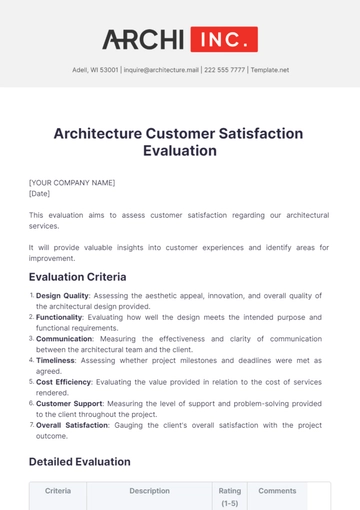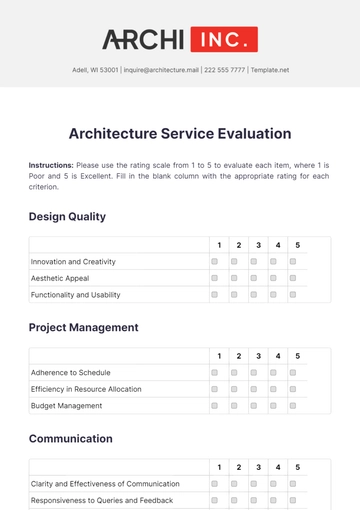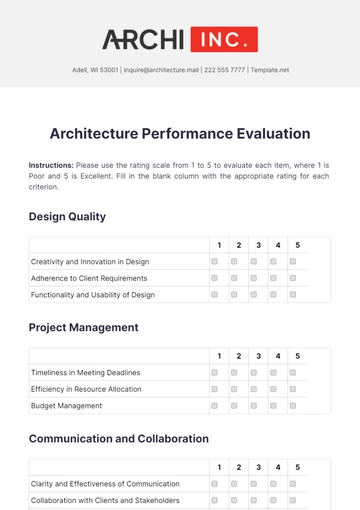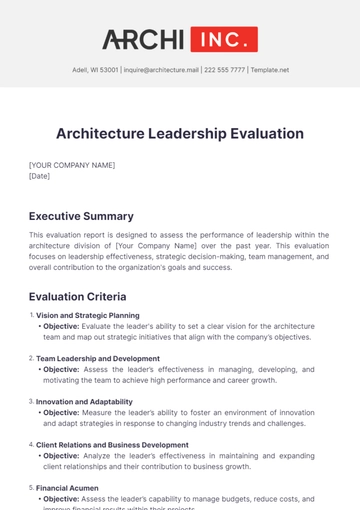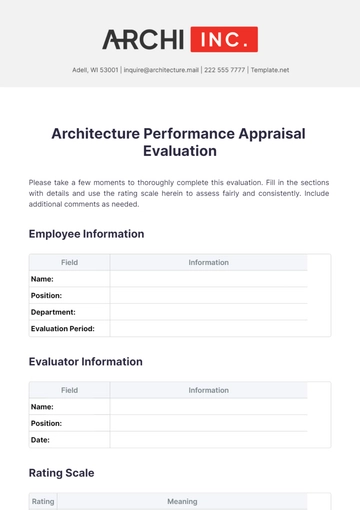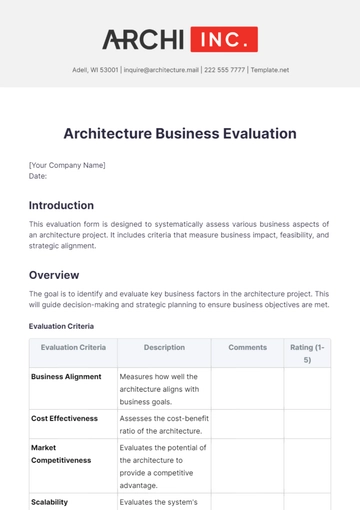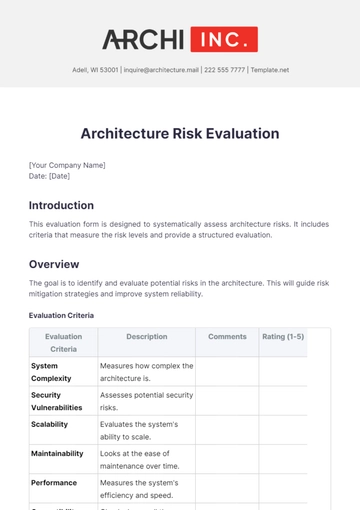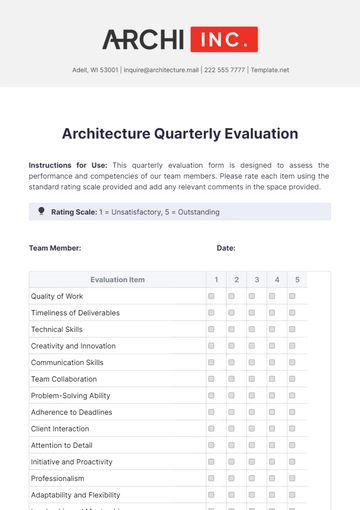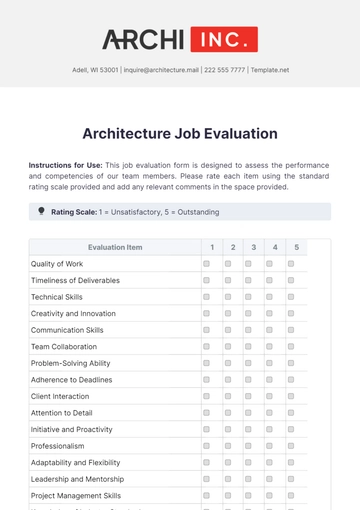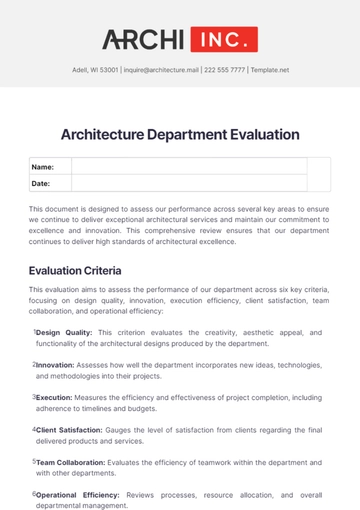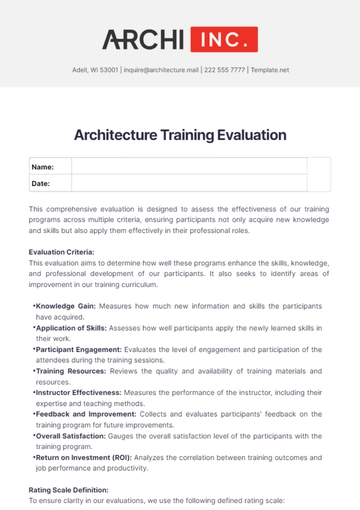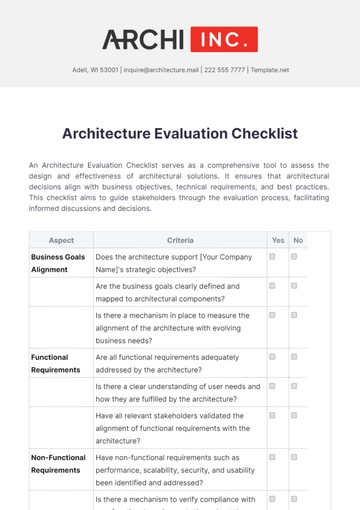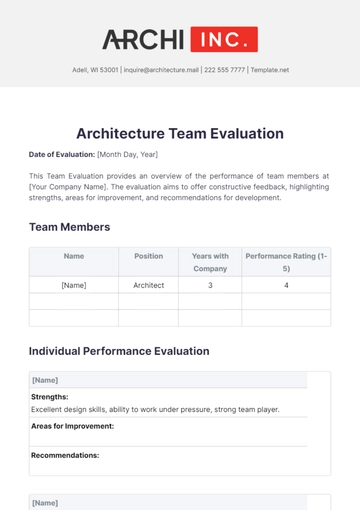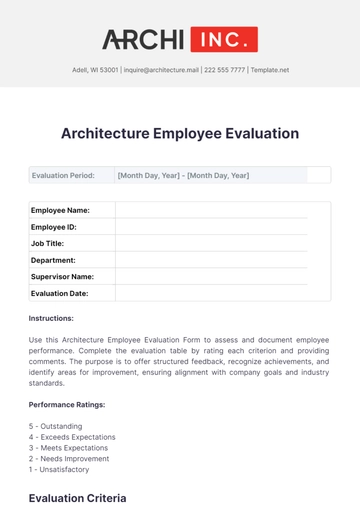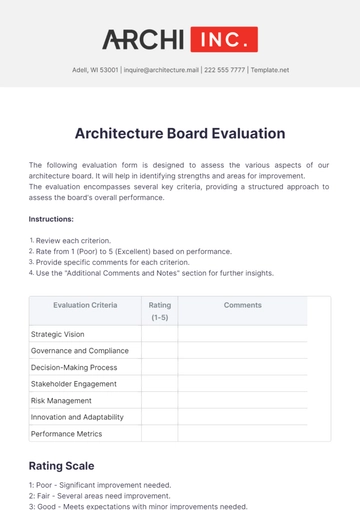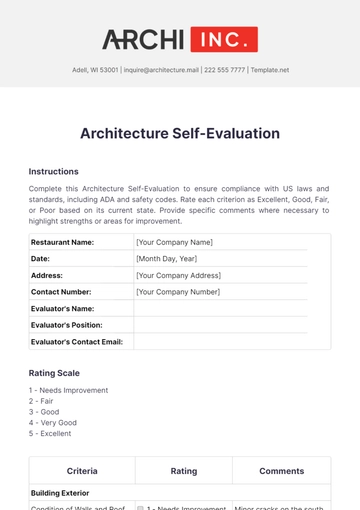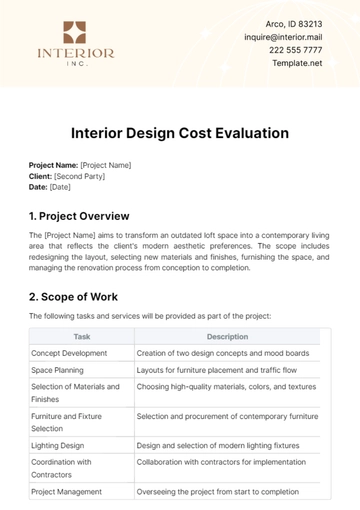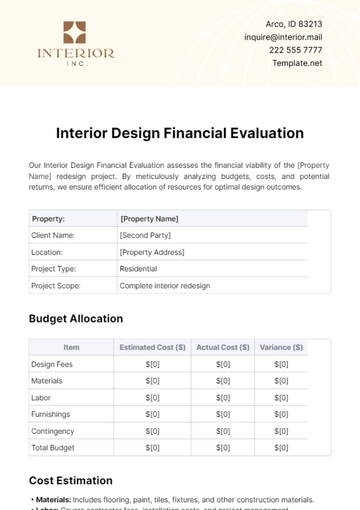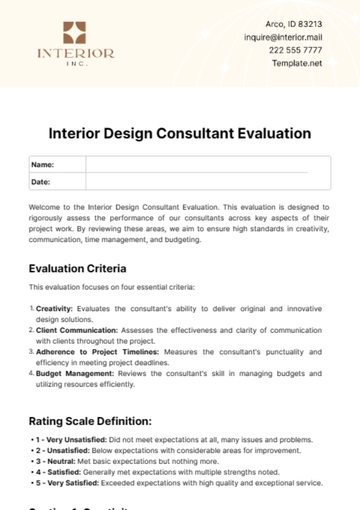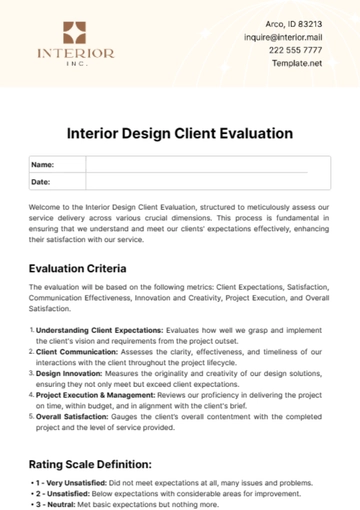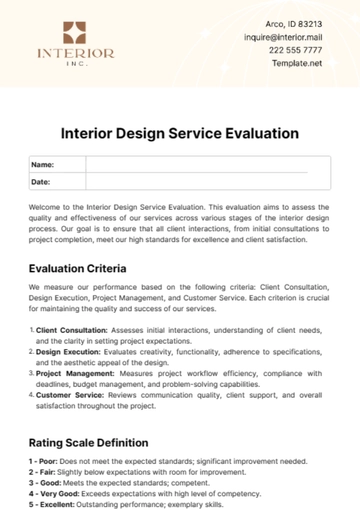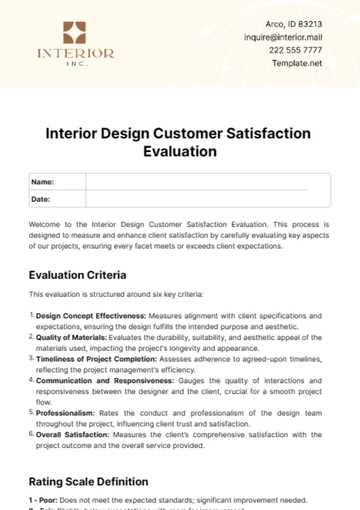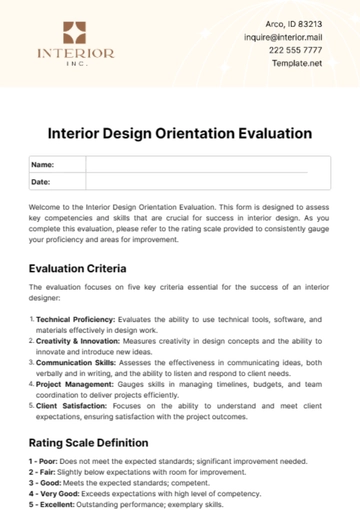Aspect | Criteria | Yes | No |
|---|
Business Goals Alignment | Does the architecture support [Your Company Name]'s strategic objectives? | | |
| Are the business goals clearly defined and mapped to architectural components? | | |
| Is there a mechanism in place to measure the alignment of the architecture with evolving business needs? | | |
Functional Requirements | Are all functional requirements adequately addressed by the architecture? | | |
| Is there a clear understanding of user needs and how they are fulfilled by the architecture? | | |
| Have all relevant stakeholders validated the alignment of functional requirements with the architecture? | | |
Non-Functional Requirements | Have non-functional requirements such as performance, scalability, security, and usability been identified and addressed? | | |
| Is there a mechanism to verify compliance with non-functional requirements throughout the development lifecycle? | | |
| Are there any trade-offs made to meet conflicting non-functional requirements? | | |
Technical Standards Compliance | Does the architecture adhere to industry-standard technical frameworks and protocols? | | |
| Are there any deviations from established technical standards, and if so, are they justified? | | |
| Are there mechanisms in place to ensure ongoing compliance with evolving technical standards? | | |
Scalability and Flexibility | Is the architecture designed to accommodate future growth and changing business needs? | | |
| Are there provisions for scaling individual components or the entire system horizontally and vertically? | | |
| Can the architecture easily integrate with new technologies and adapt to evolving trends? | | |
Performance Optimization | Have potential performance bottlenecks been identified and addressed in the architecture? | | |
| Is there a strategy in place for monitoring and optimizing system performance during development and post-deployment? | | |
| Have performance benchmarks been established and met during testing? | | |
Resilience and Fault Tolerance | Does the architecture incorporate mechanisms to handle failures gracefully and ensure continuous operation? | | |
| Are there redundancy measures in place to mitigate the impact of hardware or software failures? | | |
| Has the architecture been tested under various failure scenarios to validate resilience? | | |
Security and Compliance | Are security requirements defined and integrated into the architecture? | | |
| Does the architecture implement appropriate measures to safeguard sensitive data and protect against security threats? | | |
| Is the architecture compliant with relevant industry regulations and standards (e.g., GDPR, HIPAA, PCI-DSS)? | | |
Documentation and Communication | Is the architecture documentation comprehensive, accurate, and up-to-date? | | |
| Are architectural decisions and rationale clearly communicated to relevant stakeholders? | | |
| Is there a process for maintaining and disseminating architectural knowledge within the development team? | | |
Cost-effectiveness | Have cost implications been considered in architectural decisions, such as infrastructure requirements and licensing fees? | | |
| Is the architecture optimized to deliver maximum value within budget constraints? | | |
| Are there strategies in place to monitor and control costs throughout the project lifecycle? | | |
